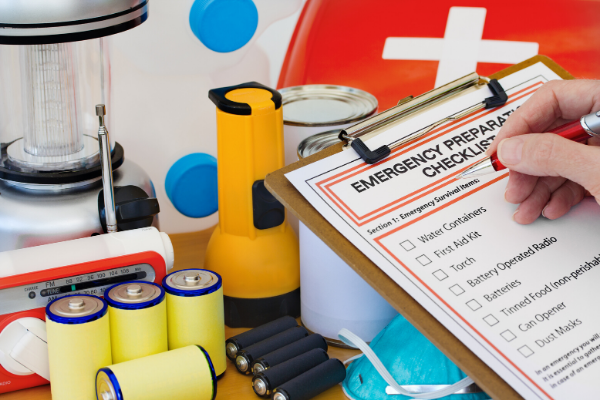Please call 1-800-794-1989 or use the SmartHub mobile app. To talk to a person, press zero.
Shoes and a form of identification are the most important items to have with you during a weather emergency.
After an emergency, you may need to survive on your own for several days.
Being prepared means having your own food, water and other supplies to last for at least 72 hours. A disaster supplies kit is a collection of basic items your household may need in the event of an emergency.
Make sure your emergency kit is stocked with the items on the checklist below. Most of the items are inexpensive and easy to find and any one of them could save your life. Headed to the store? Download a printable version to take with you. Once you take a look at the basic items consider what unique needs your family might have, such as supplies for pets or seniors.
Since you do not know where you will be when an emergency occurs, prepare supplies for home, work and cars.
- Home: Keep this kit in a designated place and have it ready in case you have to leave your home quickly. Make sure all family members know where the kit is kept.
- Work: Be prepared to shelter at work for at least 24 hours. Your work kit should include food, water and other necessities like medicines, as well as comfortable walking shoes, stored in a “grab and go” case.
- Car: In case you are stranded, keep a kit of emergency supplies in your car.
Additional Resources
- Family Emergency Communication Guide
- Family Communication Plan Fillable Card
- Emergency Plan for Families or (PDF)
- Emergency Plan for Commuters
- Family Emergency Communication Planning Document
- Family Emergency Communication Plan Wallet Cards
- Know Your Alerts and Warnings
- Protect Critical Documents and Valuables
- Document and Insure Your Property
- Emergency Financial First Aid Kit
- Consumer Financial Protection Bureau Disaster Checklist
- Make a Plan (Video)





